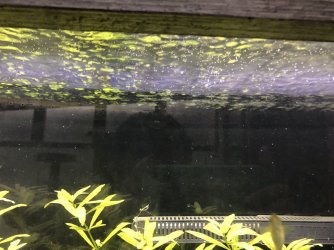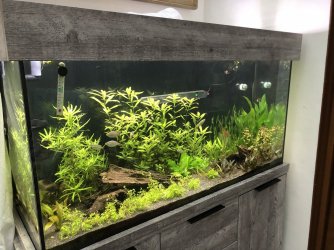CarloM12
Fish Fanatic
- Joined
- Oct 12, 2017
- Messages
- 61
- Reaction score
- 3
Hello everyone,
I’ve had my 75 gallon planted tank for over 2 years now, and it feels like nothing really grows or does anything and I’m not sure why. There’s a fluval spectrum LED light meant for plants on about 10 hours a day, using NA Thrive once a week as a complete fertilizer which is supposed to be one of the best on the market along with root tabs. It’s an ecocomplete substrate as well.
However there’s so many plants in particular swords that are staying low giving off new leaves but not growing upwards. It’s very annoying to see the same process occur everytime I introduce a new one, the old leaves die off and then I’m left with a short plant with healthy new leaves none taller than 5 inches. On top of this I have some algae problems on plant leaves such as the Anubias which get it really bad. Not sure what the problem is but I’m losing patience with this tank and I hope to be able to get some help from you guys. I will attack some pictures below thanks.



I’ve had my 75 gallon planted tank for over 2 years now, and it feels like nothing really grows or does anything and I’m not sure why. There’s a fluval spectrum LED light meant for plants on about 10 hours a day, using NA Thrive once a week as a complete fertilizer which is supposed to be one of the best on the market along with root tabs. It’s an ecocomplete substrate as well.
However there’s so many plants in particular swords that are staying low giving off new leaves but not growing upwards. It’s very annoying to see the same process occur everytime I introduce a new one, the old leaves die off and then I’m left with a short plant with healthy new leaves none taller than 5 inches. On top of this I have some algae problems on plant leaves such as the Anubias which get it really bad. Not sure what the problem is but I’m losing patience with this tank and I hope to be able to get some help from you guys. I will attack some pictures below thanks.






